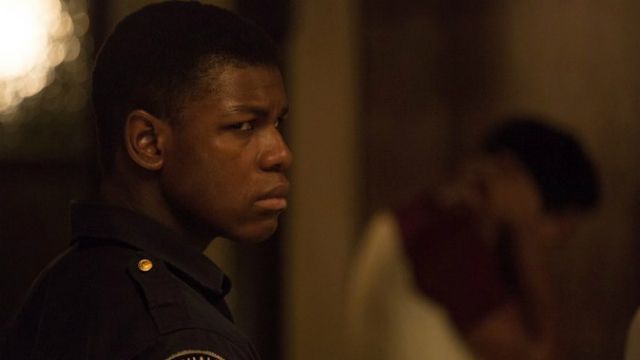“Detroit”, writer-director Kathryn Bigelow’s latest “you-are-there” style film drama, is as harrowing an experience as any we’ve seen on film in 2017.
Through a seamless blend of archival photography and cinéma vérité-style photography using handheld cameras, Bigelow ("The Hurt Locker", "Zero Dark Thirty") plunges audiences into the events of one nightmare of a night just 50 short years ago, a night that left three people dead, a handful scarred for life, and a community failed yet again by its justice system.
The film is riveting, intense, and ultimately thought-provoking, at the very least in terms of how people could be so easily dehumanized, how such behavior could be rationalized into efforts to maintain law and order, and how victims’ lives can never return to what they were, no matter how much time passes.
What’s it about?
Set during the 1967 racially charged 12th Street Riot in Detroit, the majority of the film reconstructs what came to be known at the time as “the Algiers Motel Incident,” where a handful of men and women were brutalized by Detroit Police officers trying to coerce a confession regarding suspected sniper fire coming from the hotel or its surroundings.
But “Detroit” also presents a glimpse of the sociological conditions that led to the powder-keg situation that summer in the city, as well as the police raid on the unlicensed club that sparked the riots, and the aftermath of the riots and the Algiers incident, where efforts in the courts to deliver justice for those who died at the motel on the night of July 25, 1967 fell short in the eyes of the community.
It’s all presented through the eyes of an aspiring singer (Algee Smith), a soldier home from Vietnam (Anthony Mackie), a private security guard (John Boyega), two white girls from Ohio (Hannah Murray, Kaitlyn Dever), and a Detroit policeman (Will Poulter).
Their disparate reasons for being at the hotel that night and their actions over the course of those terrible hours all collide in the film, creating an unbearably tense microcosm representative of the chaos outside the motel that claimed 47 lives, injured almost 1,200 people and destroyed over 2,000 buildings.

Setting the scene
Part of what makes “Detroit” so compelling is just how well the production blends scenes captured in photography and existing video from the time with photography created using handheld cameras in the present day. The color palettes are identical, so at times it’s difficult to tell where the archival footage ends and the film’s photography starts.
The production also takes care to present the conditions that led up to the outbreak of violence in a way that avoids looking and sounding like a history lesson. Bigelow’s method for condensing a half-century’s worth of population migration, industrialization, and economic decline at the start of the film is both visually appealing and wholly appropriate, considering the population most affected by the conditions and their consequences.
Finally, Bigelow’s recreation of specific parts of the night at the Algiers, where the victims were lined up along a wall with their backs to the officers interrogating them, brilliantly incorporates tight camera shots with confined spaces to ratchet up tension even further than the brutalization taking place already creates. The resulting scenes are visceral, horrifying, and undeniably heart-breaking in the sense that the behavior and treatment of the victims is wholly believable.



